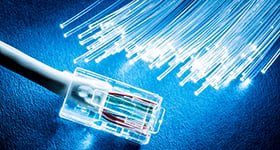According to SBI Research, the market for smart grid enabling technologies (including two-way wireless communications) in the United States is currently about $6.4 billion.
This market is expected to grow at 20.8 percent annually through 2014, when the smart grid enabling technology market will be about $16.5 billion. The bulk of this market will go toward smart sensors and devices which will need to be placed throughout the grid and within consumer homes and office buildings. This market segment, not including smart meters, is expected to increase from $2.3 billion to $5.8 billion from 2009 to 2014. The market for smart meters and associated software are expected to grow from $2.2 billion to $4.8 billion during the same period.
Several analysts, including those at Pike Research, have evaluated field area network options and seem to agree that WiMAX should be a preferred technology solution for utilities to select to anchor their field area network as the preferred access technology. WiMAX is capable of running over both licensed and unlicensed spectrum and is arguably more secure and reliable that alternative technologies. When compared to RF mesh technologies WiMAX has significantly better latency and is fully capable of supporting teleprotection applications.
The one potential downside is the cost of procuring spectrum but when measured over a 20- to 30-year lifespan these costs are manageable within the overall budget and allow utilities to ensure that they can be in control of restoration times in the event of a natural disaster such as Hurricane Katrina or the ice storm that plagued the United States’ northeast, Quebec and parts of Ontario during 1998.
WiMAX systems can be designed to meet the demanding needs of the electric utility market in creating effective and scalable two-way communication networks enabling the intelligent grid. It is important to ensure that the selected solution platform meets the reliability, data throughput, range and trip latency requirements for key utility applications such as:
1. Advanced Meter Infrastructure
Deployment of “time-of-day” metering systems to households has been mandated by many provincial and state governments in North America. The customer premise meters are often connected by means of a RF mesh network to remote “smart meter” collectors. In most cases these collectors are currently networked to the head end via commercial cellular networks or POTS lines. WiMAX networks can be used where these commercial networks do not have coverage, the required reliability or where restoration times do not meet the requirements of the utility.
The basic networking requirement is to provide communication paths between each remote collector and the utility head end.
2. Distributed Generation (DG) Enablement Monitoring and Control
Within utility companies, a major driver for “smart grid” deployment is “DG Enablement”, which is the sum total of necessary upgrades to the utility distribution system to allow generation connection to the feeder system. The primary communications requirements are for monitoring and control, and for teleprotection.
The basic networking requirement is to provide communications paths between various points on the distribution system (reclosers, voltage regulators, distribution stations) and the Utility Grid Control Center.
3. DG Enablement Teleprotection
An upgrade to the electrical distribution feeder protection system is a basic requirement for DG enablement. These upgrades, at least on “M-class” feeders will introduce requirements for teleprotection signaling, including at least the following:
· Transfer trip from Recloser Controllers and Feeder Protection Relays to Distribution Generator connections
· Distribution Generator End Open from Distribution Generator connections to Reclosers and Feeder Protection Relays
· Blocking signals from Recloser Controllers to Feeder Protection Relays
The basic networking requirement is to provide communications between the signaling end-points to enable remote control and monitoring of these various devices.
Latency and bandwidth requirements for these three applications can be met by WiMAX and proprietary broadband wireless access systems and associated back-haul networks such as those provided by Redline Communications.
Redline provides highly differentiated products to the utility market: under the RedMAX and RedCONNEX/RedACCESS AN-80i brands. Each product set available today is optimized for a particular band class and the application set and the particular use cases that characterize each band class.
The RedMAX EX-200 is Redline’s 802.16e-2005 based product that has been selected by Hydro One for use in its Smart Zone project. The EX-200 product solution has been optimized for use by utility customers based upon the market requirements for both transmission and distribution applications.
Redline recognized that several fundamental changes needed to be made to the core technology in order to meet the demanding requirements of the smart grid market.
A smart grid network is fundamentally different than a service provider access network in that the bulk of traffic flows primarily from the edge of the network to the core of the network. Service provider networks are built with a “downlink bias” where the majority of traffic flows from the core to the edge – for example during a typical web session as a user browses through a web site, small ‘get’ commands deliver significantly greater traffic from the web site host computer to the user’s desktop computer. In a smart grid, the traffic is ‘uplink biased’ with a large number of distributed smart meters, IEDs, video cameras and so on, delivering information from the sensors and machines at the edge of the network up to data centers in the core of the network.
In order to facilitate the optimized network utilities demand, Redline’s design engineers have modified the core signal processing in both the base station and CPE to allow the uplink-downlink ratio bias desired by each utility’s network design architect.
Power engineers within the electric utility have specified a requirement for sub-cycle latency in the two-way communications network. Typical commercially available multipoint wireless broadband systems whether mesh or cellular based have one-way latency in the 35 to 150 millisecond range. Redline’s engineers have modified the core signal processing within both the base station and CPE terminals to reduce the one-way latency within the field area network to less than 20 milliseconds as required by utility customers.
Long range connections are required for both smart meter collection and Teleprotection applications. In smart meter collection applications, Redline’s RedMAX EX-200 can be used effectively for backhauling smart meter connections, enabling a more cost-effective deployment. This capability has been enabled by modifications to the 802.16e-2005 MAC enabling the RedMAX EX-200 to support a longer range of up to 25 km versus the 9 to 10 km supported by the WiMAX Forum profiles.
In many cases, smart grid networks use IEC based protocols that are not necessarily IP based, so layer 2 Ethernet transport is required. Further, the capability of forwarding the traffic at layer 2 rather than sending information to a centralized ASN-GW may also contribute to the reduction in end-to-end latency.
Finally, the RedMAX Remote Radio Head implements Digital Pre-Distortion. This advanced RF capability allows higher output power with reduced power consumption with the added benefit of reducing both adjacent and alternate channel interference enabling better spectrum utilization and tighter frequency reuse.
These topics and others will be addressed in my keynote presentation during the
Smart Grid Summit.
Learn more about Smart Grid technology at the Smart Grid Summit, an event collocated with ITEXPO East 2010, to be held Jan. 20 to 22 in Miami. This is the event you need to attend if you want to understand the role that IP communications technologies will play in how the Smart Grid evolves – not just for making utilities more efficient, but also for enabling the Smart Home and a new generation of communications innovations. Register now.
IoTevolutionworld publishes expert commentary on various telecommunications, IT, call center, CRM and other technology-related topics. Are you an expert in one of these fields, and interested in having your perspective published on a site that gets several million unique visitors each month? Get in touch.
Edited by
Michael Dinan





